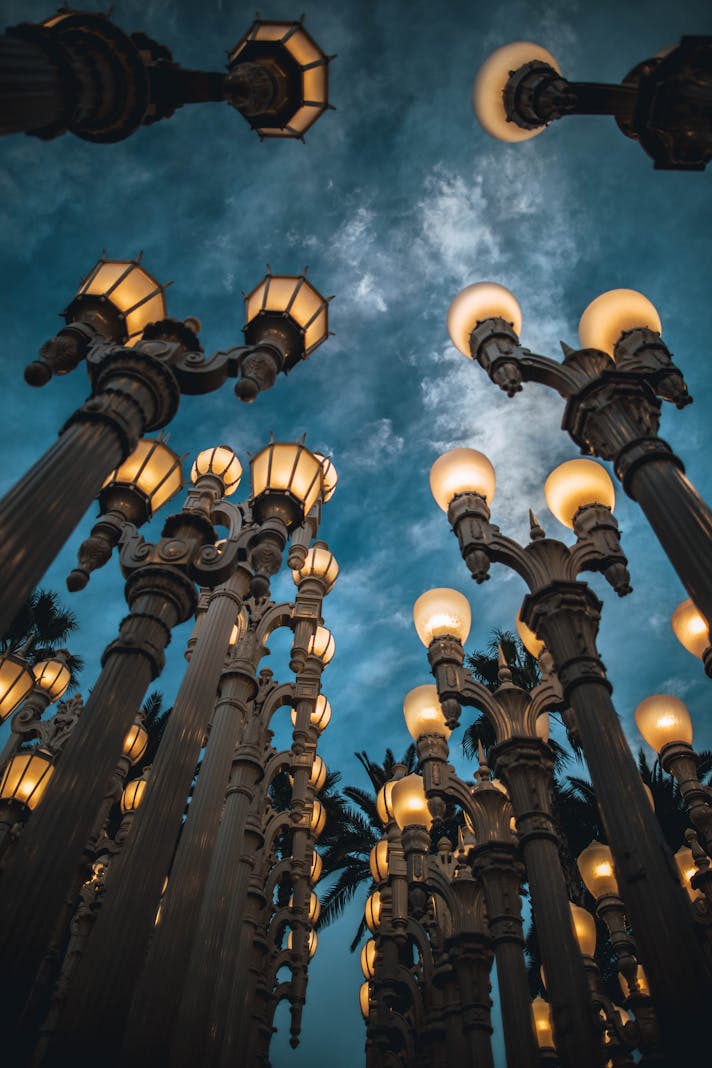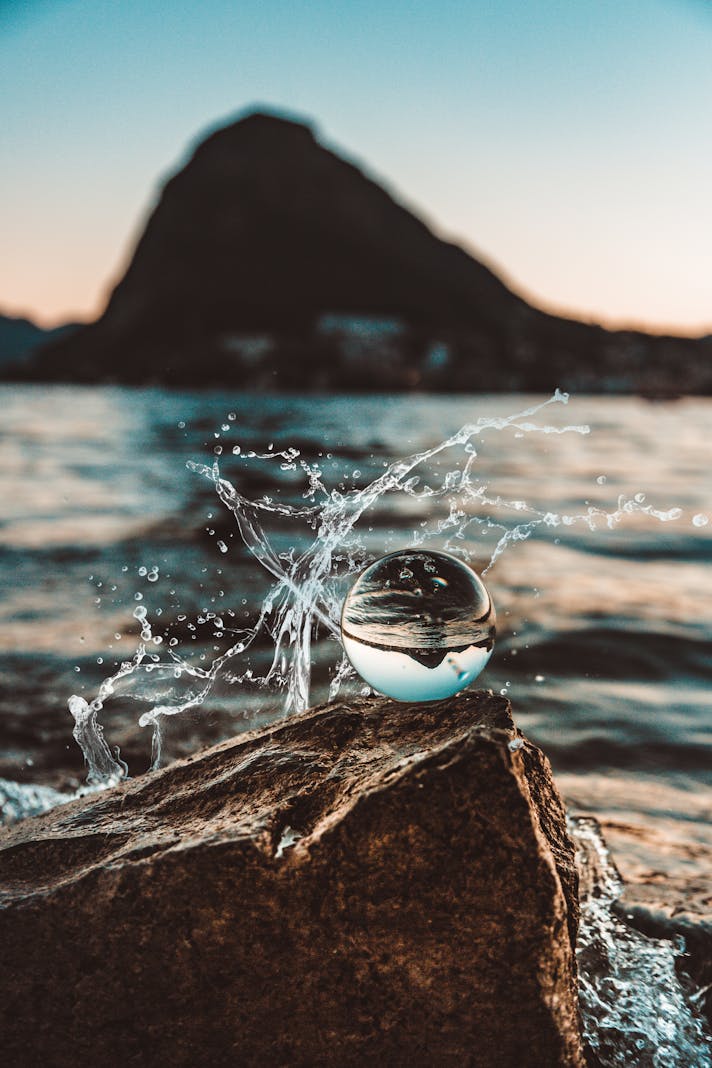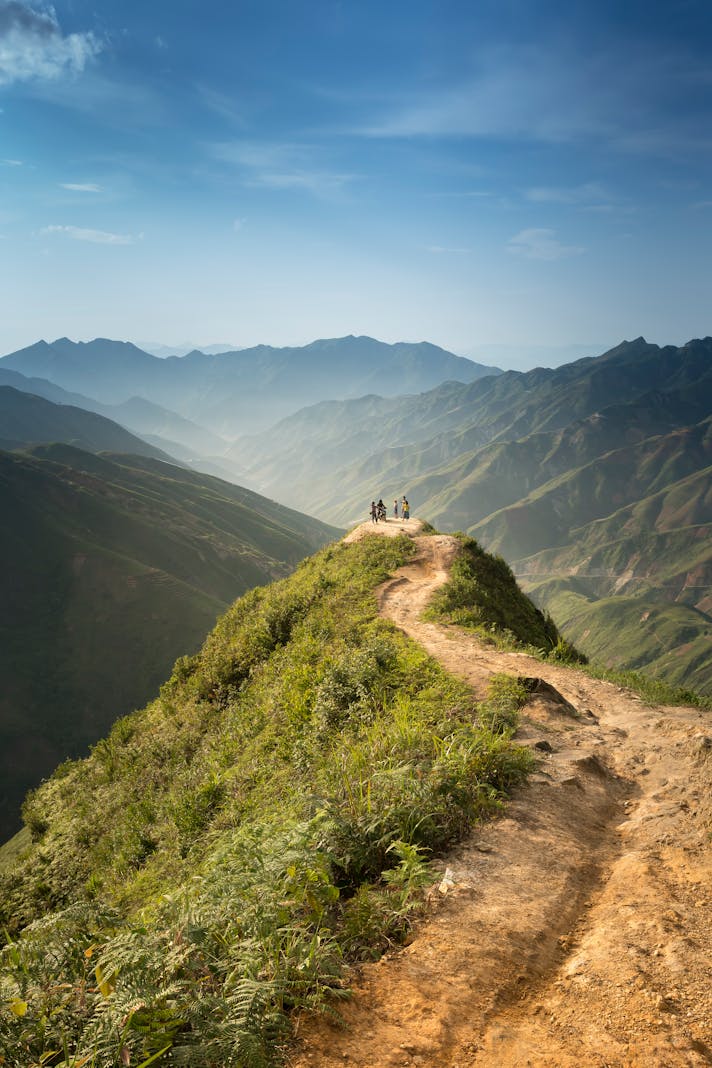Lassen National Park

One of the most interesting areas in the National Park System is also one of the most remote in California. Those interested in the geological activity which makes California an active part of the Pacific Ring of Fire should make the trip to Lassen National Park, in the little-visited northeastern part of the state. Here, hiking leads not to ocean views but to evidence of the constant volcanic activity of Mother Earth.
The hydrothermal areas of the park are reason enough to visit. Hot molten rock lies beneath the park; steaming pools, hissing vents, and large cauldrons of mud and boiling water co-exist with the more recognizable mountain geology. Mud crusts, which form atop wet areas, are easily broken, resulting in a mosaic of dry ground, wet sludge, and watery pools. This is a wonderful place for outdoor photographers looking for unusual photos, but be warned: it is extremely dangerous to step off the paths and trails. People have been badly burned by the temperatures in the wet areas, and what appears to be solid ground can give way without warning.
Bumpass Hell is the largest volcanic area at Lassen National Park. From the parking lot to the waters, it is an easy three mile hike with minimal elevation gain. Devil’s Kitchen and Boiling Springs Lake can also be accessed via hiking. For those who wish to view the park from the comfort of the car, there are areas that can be seen from one of the park roads.
There are many, many other hiking trails within the park, and plenty of alpine beauty to soothe the city soul. Picnicking by lakes or meadows is popular, as is wilderness backpacking. In addition, the remoteness of the park means that there are dark, dark skies available for stargazing and amateur astronomy. Visitors can join in ranger-led programs, including the Dark Sky Festival in August, or view the Milky Way on their own.
The park is open all year, and winter sports allow a different view of the area. Winter trails allow snowshoeing and cross-country skiing are available; visitors do need to bring their own equipment. Families can come for snow play, and winter camping is also a possibility. Remember that mountain winters require extra equipment for cars and special clothing for visitors, and stay safe!
Because Lassen is so remote, lodging becomes part of the adventure. Visitors wishing to stay within the park have one option: Drakesbad Guest Ranch in the Warner Valley. Those who don’t mind driving in and out of the park have more choice, as there are a few lodges in Mineral, to the southwest of the park, and in Chester, to the southeast. Alternatively, there are camping cabins and campsites within the park, some of which may be reserved in advance.
Getting there requires some driving. Lassen is 252 miles from San Francisco, the closest international airport, and roughly midway between Sacramento, California, Ashland, Oregon, and Reno, Nevada. The road from Reno requires more mountain driving than does the route from Interstate 5, where motorists may access the park from either Redding to the north or Red Bluff to the south. Keep in mind that the Sierra/Cascade Range is high alpine geography, and snow can occur in any month of the year. Check weather conditions often and arrive prepared.
The hydrothermal areas of the park are reason enough to visit. Hot molten rock lies beneath the park; steaming pools, hissing vents, and large cauldrons of mud and boiling water co-exist with the more recognizable mountain geology. Mud crusts, which form atop wet areas, are easily broken, resulting in a mosaic of dry ground, wet sludge, and watery pools. This is a wonderful place for outdoor photographers looking for unusual photos, but be warned: it is extremely dangerous to step off the paths and trails. People have been badly burned by the temperatures in the wet areas, and what appears to be solid ground can give way without warning.
Bumpass Hell is the largest volcanic area at Lassen National Park. From the parking lot to the waters, it is an easy three mile hike with minimal elevation gain. Devil’s Kitchen and Boiling Springs Lake can also be accessed via hiking. For those who wish to view the park from the comfort of the car, there are areas that can be seen from one of the park roads.
There are many, many other hiking trails within the park, and plenty of alpine beauty to soothe the city soul. Picnicking by lakes or meadows is popular, as is wilderness backpacking. In addition, the remoteness of the park means that there are dark, dark skies available for stargazing and amateur astronomy. Visitors can join in ranger-led programs, including the Dark Sky Festival in August, or view the Milky Way on their own.
The park is open all year, and winter sports allow a different view of the area. Winter trails allow snowshoeing and cross-country skiing are available; visitors do need to bring their own equipment. Families can come for snow play, and winter camping is also a possibility. Remember that mountain winters require extra equipment for cars and special clothing for visitors, and stay safe!
Because Lassen is so remote, lodging becomes part of the adventure. Visitors wishing to stay within the park have one option: Drakesbad Guest Ranch in the Warner Valley. Those who don’t mind driving in and out of the park have more choice, as there are a few lodges in Mineral, to the southwest of the park, and in Chester, to the southeast. Alternatively, there are camping cabins and campsites within the park, some of which may be reserved in advance.
Getting there requires some driving. Lassen is 252 miles from San Francisco, the closest international airport, and roughly midway between Sacramento, California, Ashland, Oregon, and Reno, Nevada. The road from Reno requires more mountain driving than does the route from Interstate 5, where motorists may access the park from either Redding to the north or Red Bluff to the south. Keep in mind that the Sierra/Cascade Range is high alpine geography, and snow can occur in any month of the year. Check weather conditions often and arrive prepared.

Related Articles
Editor's Picks Articles
Top Ten Articles
Previous Features
Site Map
Content copyright © 2023 by Korie Beth Brown, Ph.D. . All rights reserved.
This content was written by Korie Beth Brown, Ph.D. . If you wish to use this content in any manner, you need written permission. Contact Korie Beth Brown, Ph.D. for details.







